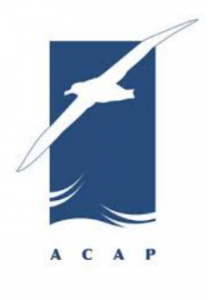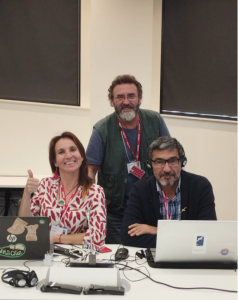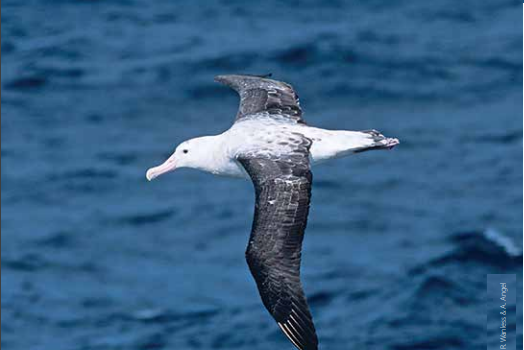Chilean Delegation participates in ACAP Advisory Committee Thirteenth Meeting
June 1st, 2023 ACAP 13th Advisory Committee Meeting (AC13) will take place during May 2023, in Edinburgh, Scotland, UK. These Seabird Bycatch Working Groups (SBWG11) and Population and Conservation Status Working Group (PaCSWG7)meetings precede AC13 and took place from Monday May 15th to Friday May 19th. On the other hand, on Sunday, May 14th, a data workshop on data entry into ACAP platform was held with all the delegations´s high participation.
ACAP 13th Advisory Committee Meeting (AC13) will take place during May 2023, in Edinburgh, Scotland, UK. These Seabird Bycatch Working Groups (SBWG11) and Population and Conservation Status Working Group (PaCSWG7)meetings precede AC13 and took place from Monday May 15th to Friday May 19th. On the other hand, on Sunday, May 14th, a data workshop on data entry into ACAP platform was held with all the delegations´s high participation.
The meeting´s objectives are to share work and research results, review some rules and procedures as well as plans and programs, and to begin the tenth meeting of Albatrosses and Petrels Conservation Agreement advisory committee (ACAP)´s preparation.
 The Chilean delegation was represented by Marcelo García (Subpesca), Chile’s focal point for ACAP, Luis Adasme from Fisheries Promotion Institute (IFOP) SBWG official member , and Verónica López (Oikonos NGO). In addition, in the Chilean group, Cristian Suazo from ATF Chile. During the meeting, advances and improvements that the country has had in terms of mitigation of incidental capture of seabirds in fishing operations (*) were provided.
The Chilean delegation was represented by Marcelo García (Subpesca), Chile’s focal point for ACAP, Luis Adasme from Fisheries Promotion Institute (IFOP) SBWG official member , and Verónica López (Oikonos NGO). In addition, in the Chilean group, Cristian Suazo from ATF Chile. During the meeting, advances and improvements that the country has had in terms of mitigation of incidental capture of seabirds in fishing operations (*) were provided.
The schedule had a large table which addressed SBWG11different texts and documents presented in working document formats, as well as information documents. The themes were developed during the group’s working sessions which were intensely debated in their deliberations.
Luis Adasme, Department of Fisheries Evaluation professional , pointed out that “participating in these instances is valuable for Chile and particularly for IFOP, since they allow knowledge exchange with other researchers in the area, learning about the the mitigation of the incidental capture of seabirds in fishing operations advances , as well as showing work and progress developed by Chile around this research line in line with the ecosystemic approach promoted by the current fishing law (LGP)”.
Luis Adasme presented the work “By-catch rates and mortality of seabirds for trawling fleets in Chile, period 2015-2021” (*summary below), work that was very well received and valued by the entire working group.
* Seabird by-catch and mortality rates for trawling fleets in Chile, period 2015-2021.
Authors: Luis Adasme and Cristian Vargas
Summary
Five trawl fleets (3 industrial and 2 smaller vessels) have been analyzed. Trawl fishery as a whole for the declared period recorded 10,971 observed captured seabirds, with a mortality of 10,740 individuals (97.9%), associated with larger fleets. For their part, the two smallest trawling fleets did not record seabird by-catch in their fishing operations. The observations coverage in number of sets per fishing expedition for the largest trawling fleets remained above 40% throughout the entire historical series SBWG11 Doc 20 Agenda Item 11 3 analyzed. Twelve main species are observed in fishing operations, showing clear differences between them in terms of by-catch. By far, the most captured species is Thalassarche melanophris, with 87% of the total. The total seabirds catch and mortality in three trawling fleets were estimated. The estimated total number from 2015 to 2021 for the trawl fishery as a whole was 21,092 (95% CI: 17025-22296), divided into 19,480 (95% CI: 17025-22296) for the southern fleet of vessels. demersal trawl factory (PDA); 852 (95% CI: 570-1292) for ice trawler fleet (PDA) and 761 (95% CI: 507-1150) for the south-central fleet of demersal ice trawlers (DCS). The fleet that concentrated the highest total catch and the highest observed mortality during the historical series was, by far, that of factory trawlers.
Research period estimates show clear adjustment improvements in the last three years. The incorporation of mitigation measures in the trawl operations started in 2020 and sustained with increased use during 2021 suggest an achievement of the reduction of by-catch in these operations.
Press related links:
